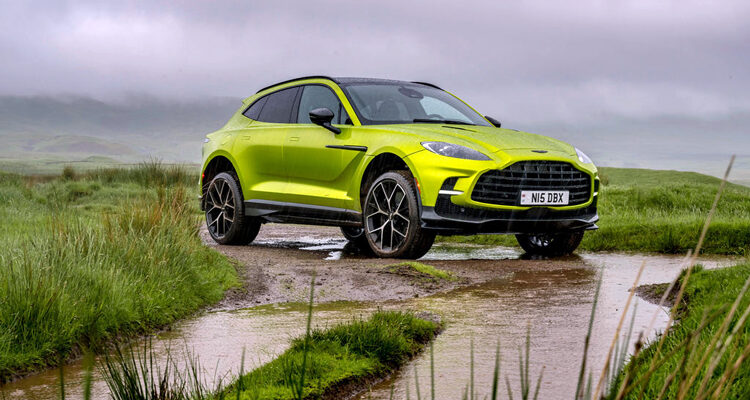Edinburgh, Scotland — There are some challenging gigs out there in the world today. Ditch digger. Mortician. Soldier. In the traditional sense, being a chief engineer for a high-end automotive brand does not fill the same bill. Yet, according to Andy Tokley, who leads the vehicle engineering department at Aston Martin, there are definitely challenges.
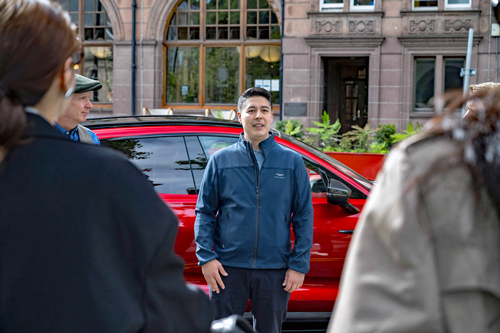
Two years ago, his team unleashed the Aston Martin DBX707 on the world—and it was a roaring success. The super-SUV became such a strong seller, it forced the brand to completely abandon the entry-level DBX, which was introduced a scant four years ago.
There may have been initial plans to introduce an entire range of DBX variants, as Porsche does with the Cayenne. But the Aston Martin brain trust have identified more opportunities at the higher end of the automotive market and they’re going full bore in that direction.
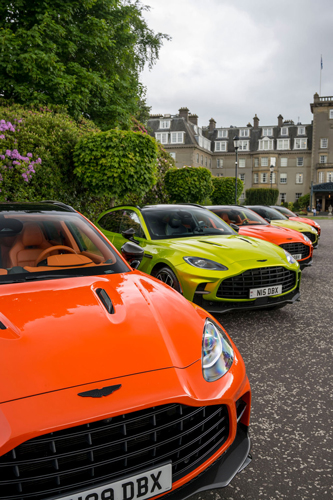
This decision would suit Tokley just fine; he’s an authentic car guy tasked with making an SUV into something of a track animal. In a recent interview published in the Aston Martin customer magazine, he went into detail on why the assignment was so appealing…
“Working on a luxury SUV is a great challenge. That’s due to the wide range of capabilities our customers expect from theirs. DBX707 has to perform in extreme cold and hot climates. Off-road and on track. It also has to be capable of carrying five occupants in luxurious comfort, with a boot full of luggage, a roofbox, and a trailer.”
It’s an interesting take. Of course, he’s correct in his assessment. But it’s still fascinating that the customer base has these expectations for a luxury SUV when everyone also understands that its primary role is to transport people to the local shopping district.
Two years ago, the original DBX707 was launched on the island of Sardinia. Beautiful, sunny place. The perfect setting for a brand that’s often considered to be the “British Ferrari.” But the event did not take place on a racetrack, despite the vehicle’s very serious performance credentials.
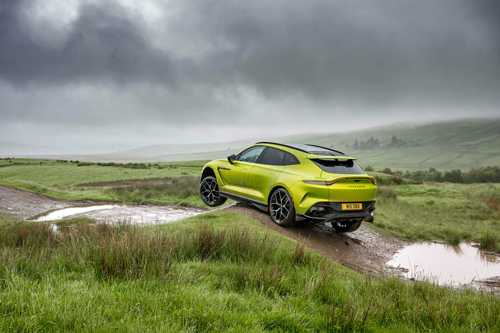
Under the hood, the twin-turbocharged 4.0-litre V-8 engine, sourced from Mercedes-AMG, cranks out 698 horsepower and 664 pound-feet of torque. (The “707” in the name derives from the engine’s 707 brake horsepower.) This thunderous creation is linked to a 9-speed “wet clutch” automatic transmission, the combination permitting the DBX707 to accelerate from 0-100 km/h in 3.2 seconds. Top speed is a staggering 311 km/h.
(Remember: This is an SUV we’re talking about.)
While the event in Italy didn’t provide the opportunity to verify these figures, it did confirm that the Aston Martin was a worthy entry in the super-SUV segment; its place among the Porsches and the Bentleys and the Lamborghinis of the world was secure.
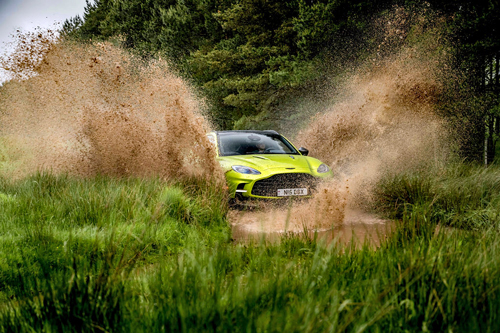
The vehicle also broke new ground for the brand in other ways: For the first time ever, Tokley’s squad tackled an active damping suspension system, triple volume air suspension and an active all-wheel drive system.
Two years later, a revised version of the DBX707 is here. The nominal reason for this new model was to replace and modernize the infotainment system, which was also adopted from the Mercedes-Benz concern. When customers pay $300,000-plus for a vehicle, they don’t expect to encounter switchgear and systems from a car costing one-sixth of the price—completely understandable, when you stop to think about it.
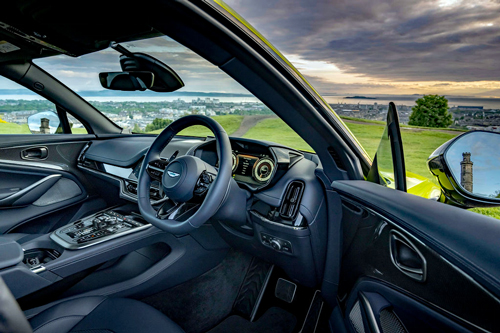
As a result, the latest DBX features an infotainment system that was developed internally. The system incorporates a 12.3-inch instrument panel and a 10.25-inch central touchscreen, but there’s also a set of controls off the screen, including the drive mode selector, and switches for the air suspension, stability control and exhaust systems.
The DBX 707 also features three new interior trim packages, two with embroidered patterns and one with Alcantara trim. These packages, in concert with the new infotainment system, are designed to take the Aston Martin upscale—and the moves have paid off. The passenger cabin is very luxurious, very driver-focused. What’s more, the back seat is surprisingly large for a high-performance SUV; passengers over six feet tall can easily find comfort back there.
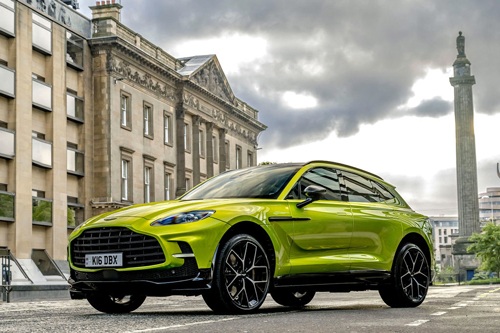
Given that a revised DBX707 was already in the cards, the engineers took advantage and set about sharpening their pencils. “Performance is something that never stands still,” Tokley said during the launch of the revised version, held in Scotland. “I drive the [vehicle] constantly, everything from running family errands to going on the track. If you’re not moving forward with the engineering, you risk being leapfrogged.”
For the new model, he and the engineering team focused on a few key areas: the suspension system is recalibrated, the exhaust system is retuned to deliver stronger tones at lower engine speeds and there are new side mirrors that incorporate a 360-degree camera.
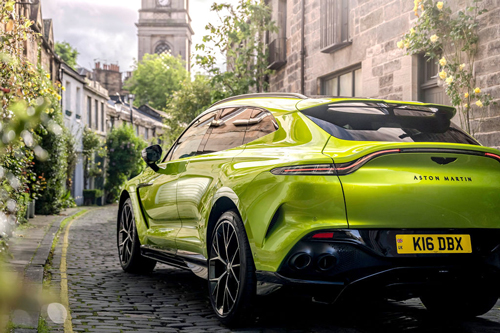
In Scotland, we once again didn’t visit a racetrack. Instead, we pilot the Aston Martin northwest from Edinburgh on stunning two-lane country roads. In this setting, the handling of the DBX707 stands out; although it’s a sizeable SUV, it doesn’t drive like one. Arriving at the Gleneagles Hotel, we gather for an unexpected type of driving activity: an off-road course cut through a pasture near the noted golf resort.
Here, we learn that the DBX707 can indeed go off-road when the mood strikes. Although it’s riding on all-terrain tires and the standard 22-inch wheels, the super-SUV comfortably powers through deep ruts, up rock-strewn paths and down steep sections. The all-wheel drive system can send all the torque to the rear wheels or half to the front wheels. There’s also a hill descent control system and a drive mode for off-roading, which raises ride height by 45 mm.
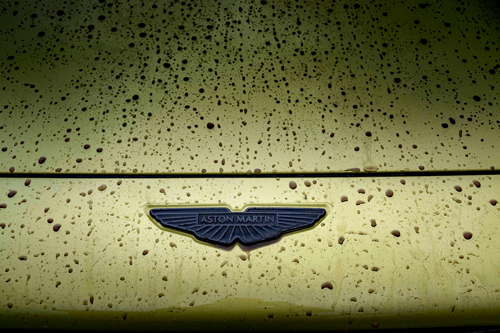
To be clear, the group does not engage in everything overly extreme, but that’s not the point. So now the Aston Martin DBX707 has seen some off-road action and plenty of on-road miles, all that’s left is the racetrack. Then and only then can we confidently say that this is the ultimate super-SUV. The engineering team, led by Tokley, could not be more confident about the outcome of this final test.
The 2025 Aston Martin DBX707 arrives in dealers across the country this year; pricing starts at $302,100.



